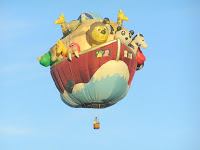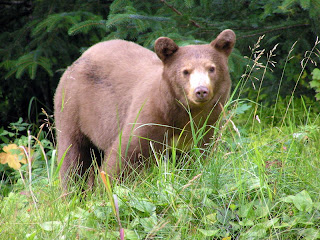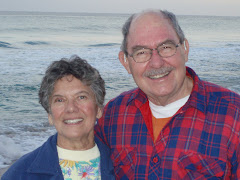Last week we started our trip down the Cassiar Highway. As I discussed earlier, the Cassiar Highway is the “other” highway running north in western Canada. It parallels the southern half of the Alaska Highway, but is west, closer to the Pacific coastline. This route was considered for the Alaska Highway. But during World War II it was thought to be too close to the coast and subject to Japanese attack.
All except for about 50 miles the Cassiar Highway is paved. However much of the road is quite narrow and winding. This of course makes it a beautiful ride, as long as one is willing to drive slowly, usually about 45 mph, but occasionally much slower. We expected to see a lot of wildlife, but all we saw was one bear cub scurrying across the road. We took our time on the way down, stopping to camp twice in beautiful campgrounds. At one campground we camped next to a lake that was overlooked by mountains. The other campground was in the middle of snowcapped mountains in a beautiful setting.
We are now in Stewart, BC. Stewart is a small town just over the border of the southernmost border of the Alaskan panhandle. About two miles away, just over the border is the town of Hyder, Alaska. Both of these towns are seaports, being on the end of a twenty-mile long fjord, known as the Portland Canal. Apparently many narrow passages, surrounded by mountains are called “canals”, although they are not dug canals, with locks, in the traditional sense of the word.
Steward is a very picturesque little town. To get to the town, one has to travel down a very narrow valley. This valley has very, very steep mountains on its side. These are so steep that at least half of the slopes have been scoured by avalanches. The tops of the mountains are often capped with glaciers, with light blue edges, or pure white snowfields. These glaciers and snowfields give birth to beautiful streams that yield a series of waterfalls, tumbling down the sides of these steep mountains.
Stewart and Hyder were once mining towns, originally for gold, then silver, and later copper. Most of the mines are no longer active, but apparently prospecting continues. I suppose the worldwide escalation of commodity prices, as well as the high price of gold, has made former mining claims, once thought worthless, once again valuable.
Stewart is Canada’s most northern Pacific seaport, which is ice-free year round. This made it a bustling city at one time, but no more. Alaska, of course has several ports, considerably north of Stewart that are ice-free all winter.
The chief reason that we came to Stewart-Hyder was to see the bears. Fish Creek, just outside of Hyder, is a good place for salmon to spawn, and this in turn, draws bears. The bears like to feast on the spawning salmon, and to fatten up in preparation for hibernation. The National Forest Service has built a viewing platform along the creek. The platform is perhaps fifteen to twenty feet above the creek, and extends about one hundred yards along the creek.
We had been told that the best time to view the bears is early in the morning. So the first day we got up at five am, took a breakfast snack and a carafe of coffee, and drove about one half an hour over to Hyder, Alaska (We are staying in Stewart, BC.) to see the bears. When we arrived, we were told that we had missed a family of a mother and three cubs. We were disappointed, of course, but we went out on the platform. In about five minutes we saw the mother bear coming up the river with her three cubs. We watched these bears for perhaps an hour and a half. The mother bear was fairly serious about fishing. The cubs were interested, but not enough to make more than half hearted attempt to fish. They were a lot like human kids, more interested playing, wrestling and eating berries than catching fish. However, when Momma caught fish, they were there to help eat it, and she seemed willing to share. After a bit, Momma Bear sat down on a gravel bar to rest, and the three cubs played around her – as seen in the accompanying picture.
Shortly after the bear with cubs left, another grizzly showed up. He fished awhile, and there is a picture of a bear catching a fish, then he left, and soon another bear showed up – and so it went for several hours. I gather from talking to the ranger, that usually the bears avoid each other, and don’t like to be within sight of each other, so usually we will see just one bear, or a mother with cubs, at a time. There are not always bears at the viewing platform, so sometimes people wait several hours until the bears show up. Early morning and late evening seems to be the best time. We have not seen black bears, only grizzlies. The grizzly bears chase he black bears away. However there are black bears that come around the viewing area. Usually they try to stay in the bushes, and relatively out of sight.


Just this evening we went over to pay a final visit to the bears. We were pleased to see the mother bear and her three cubs again. The cubs entertained us with their antics. Two of the cubs would get on their hind legs, box and cuff each other, then wrestle, until one cub forced the other to the ground and then they would wrestle on the ground. Meanwhile the other cub was lying on his/her back, playing with his/her toes.
Watching the bears is interesting. In the creek the salmon are spawning. The side of the creek is littered with dead “spawned –out” fish. Usually the bears will not eat these, although occasionally they will take a bite or two out of a dead fish, and sometimes, but not often, a bear will eat the dead fish … perhaps these are fish that recently died, and have not spoiled. When the bears fish, they will usually get in the middle of the creek and “herd” the fish upstream or downstream and then lunge in about half the time get a fish. Usually they will take the fish to shore and devour it, eating the skin and the flesh on each side. One bear we saw caught three fish, but threw away the first two after just a couple of bites. We were told that the bears sometimes just want to eat the eggs from the female fish, but I am not sure if this is true.
Yesterday we took a drive up a nearby mountain to see the glaciers. There are two important glaciers up there, Salmon Glacier (picture on the left) and Brendan Glacier (picture on the right). It was interesting to see the obvious flow marks in the glacier, and to see that far back, the glacier is on top of mountains. Although this is the middle of August, there are a lot of remains of snow from winter. I doubt if all the snow will be melted, before it begins to snow again.


Fall is definitely in the air here. The temperature frequently gets down into the mid 40’s. On the way down, on the highway, we noted that the shrubs and grasses on the side of the road are turning yellow. Although we are father south, it is certainly obvious, that the nights are getting longer, the days shorter. Here in Stewart, leaves are just beginning to fall. Certainly soon it will be time to go south, and in fact, we will start that way tomorrow morning.
 Last week we attended the Annual Balloon Festival, held in Albuquerque, NM. The festival lasted about two weeks, so we only were there for the last four days. We were there as part of a group activity of our Escapees RV Club, so we had a chance to renew some friendships and make some new ones. Many of the members there were retired people, full timers like us --- so as I like to say, it was nice to meet some adults!
Last week we attended the Annual Balloon Festival, held in Albuquerque, NM. The festival lasted about two weeks, so we only were there for the last four days. We were there as part of a group activity of our Escapees RV Club, so we had a chance to renew some friendships and make some new ones. Many of the members there were retired people, full timers like us --- so as I like to say, it was nice to meet some adults! The first evening there was an event called the “Balloon Glowdeo”. This event was held in the dusk and after dark. The balloonist inflated their baloons, but kept them tethered to the ground. Then periodically they would turn on their propane burners, in such a way that they would emit a bright yellow flame, and illuminate the whole balloon, from the inside. The effect was beautiful and with the funny shaped balloons, interesting. Unfortunately our digital camera doesn’t seem to function well in the dark, so we did not get good photos. Below is one photo, to give you an idea of what I am writing.
The first evening there was an event called the “Balloon Glowdeo”. This event was held in the dusk and after dark. The balloonist inflated their baloons, but kept them tethered to the ground. Then periodically they would turn on their propane burners, in such a way that they would emit a bright yellow flame, and illuminate the whole balloon, from the inside. The effect was beautiful and with the funny shaped balloons, interesting. Unfortunately our digital camera doesn’t seem to function well in the dark, so we did not get good photos. Below is one photo, to give you an idea of what I am writing.

 The next day there was an event called a mass ascension, where all the balloons filled with hot air, in several waves. The idea was to get all the balloons in the air at one time. At this event we had a chance to see in the air many, what I would call “funny balloons”, actually flying. There were balloons of every description: the Bunny Energizer, a pink elephant, an inflated bank building, a cow, just to mention a few. Below are some pictures of some of the more interesting balloons.
The next day there was an event called a mass ascension, where all the balloons filled with hot air, in several waves. The idea was to get all the balloons in the air at one time. At this event we had a chance to see in the air many, what I would call “funny balloons”, actually flying. There were balloons of every description: the Bunny Energizer, a pink elephant, an inflated bank building, a cow, just to mention a few. Below are some pictures of some of the more interesting balloons.








































